Did you know that it is possible to hear damage to a rotor blade? The acoustic emissions of a damaged rotor blade produce an audible sound, which our smart on-tower sensor system can analyze and assign to specific types of damage. This allows you to detect damage to the rotor blade at an early stage and counteract further consequential damage in good time.
Fast and early detection of rotor blade damage
Acoustic detection of external surface blade damage
How does the acoustic detection of rotor blade damage work with our on-tower system?
The on-tower sensor continuously measures and analyses changes in the sound generated by blade damage. Sound from wind turbine blades is received by the microphone and processed through different algorithms to identify noise from damage. Then the data is sent to the dashboard for analysis and blade conditions report.
In cases where a repair is not prioritised, the on-tower sensor will continue to track damage and its progression over time.
As a technical add-on to our on-tower sensor we offer you our smart lightning detection system.

Hear the difference
Signal with no blade damage:

Signal with blade damage:

A plug and play device easy to install and simple to operate
Our on-tower system is self-contained, uses solar power and cellular communication, it doesn’t require connection to either power or data, is completely independent from the turbine and no maintenance is needed. Only one on-tower sensor system is necessary per wind turbine tower.
It attaches magnetically to the base of the tower in less than one minute, with zero installation and replacement costs and once installed, it immediately starts measuring the sound generated by the blades as they rotate.
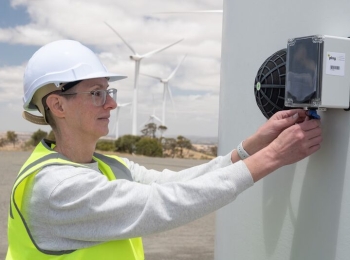
Different types of damages detected
The on-tower system compares the sound detected by the rotor blades with known acoustic signatures of damaged rotor blades to determine the likely extent and type of damage. Subsequent damage can be identified using the on-tower system:
Tip damage
The blade tip and the inflow edge are particularly exposed to erosion, which is detrimental to aerodynamics and significantly diminishes energy yields.
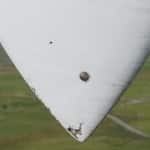
Leading edge erosion
Leading edge erosion is an emerging issue in wind turbine blade reliability, causing performance decreases and additional maintenance costs.
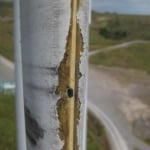
Gouge or lightning strike
Lightning strikes wreak havoc on wind turbine blades, and sometimes these lightning blasts cause severe damage to the blade.
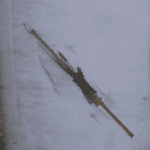
Split tip
A split tip will weaken the structural integrity of your blades, negatively affect the blade aerodynamics and reduce overall turbine performance.

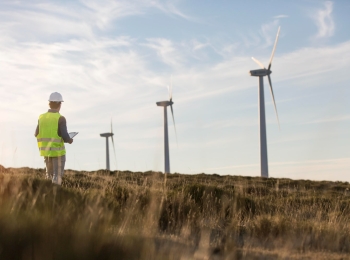
“As a company we want to be ahead of the curve and are very interested in the system to support this.”
Testimonial
“Using the data we are able to make decisions like shutting down turbines with major damage detected until further inspections are done.”
Testimonial
Get in touch
Discover the power of early blade damage detection!
Reach out to us today, and our dedicated team will gladly demonstrate our cutting-edge system to keep your wind turbines operating at peak performance.
